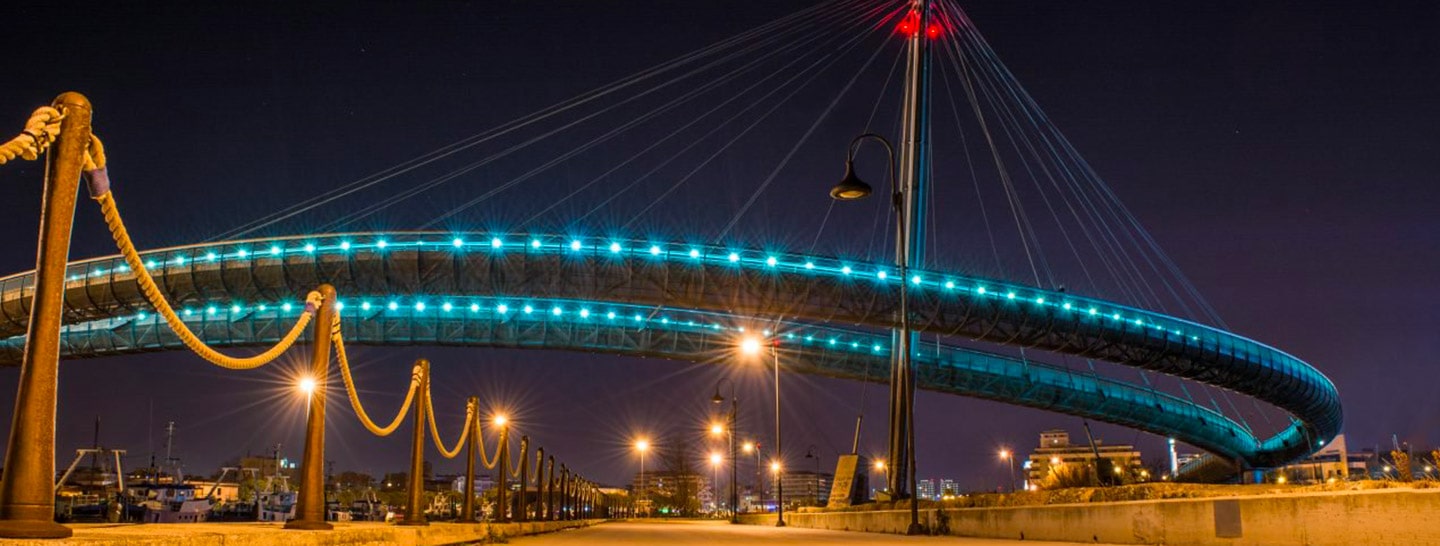
Like living organisms, they adapt to changing external stimuli. However, they can also plan their development, taking into account the needs of their residents and the impact that technologies can have on their wellbeing. These are the smart cities of the future: huge, hyper-connected ecosystems, studded with sensors, devices and software capable of gathering and processing enormous quantities of data in order to supply increasingly evolved services, respond in real time to residents’ needs, and manage the cities of today and tomorrow in a rational and sustainable way.
Data-driven administration
Data is the beating heart of the smart cities of the future. Information provided by people, vehicles and buildings is processed and transformed into efficient administrative policies. Apps keep residents up to date with all the information they might need to live well in the city.
An infrastructure of this type, based on the Internet of Things (IoT), is presently in use in Amsterdam, monitoring and regulating traffic, energy consumption and security in real time. Barcelona uses a similar system to handle the integrated management of water, lighting and parking areas, with notable benefits for the community.
Transport

Lanes for self-driving vehicles, shared mobility (car, scooter and bike sharing), bidirectional charging points for electric cars, environmental sensors, parking areas, traffic lights and smart street lighting.
This is what transport looks like in the smart city of the future. In the United States of America, for example, Kansas City has been using a system of adaptive lighting for years, where cameras fixed to streetlamps supply real time data to residents about traffic, parking areas, pedestrians on the move and potentially hazardous situations.
Energy systems
Energy systems that are increasingly digitalised and efficient, technologies such as Vehicle-to-Grid, bidirectional micro-grids and lithium ion batteries will encourage the use of solar and wind energy over polluting sources, ushering in a diffused and decentralised system of production that generates zero emissions.

City planning
More green areas, places to meet and spend time together, lanes reserved for public transport, bicycles and pedestrians, fewer vehicles on the roads and less pollution. A model that in recent years has provided Bogota (Columbia) with improved security, transportation and liveability.
A similar initiative, promoted by neighbourhood committees, has led to the transformation of a large, abandoned area in the Bronx, New York into a green space. The smart city will also be made of resilient buildings, built with “protocells”, organic materials and recycled waste material that can adapt to the environment, reducing consumption when necessary.
Prevention

Big Data, Analytics and Artificial Intelligence will help Smart Cities predict and avoid problems, from traffic and health to security. Another example from the United States is New Orleans, which uses a system of predictive analysis to map and monitor in real time the areas most at risk from fire Using a similar system to map waste collection, Los Angeles has managed to reduce by 80% the number of areas classified as not clean.
Sustainability is the aim
A good part of these solutions are already included in the offer that Enel X provides administrations, businesses and private customers, using technologies that give us reason for optimism as we survey the challenges that lie ahead. By 2050, 70% of the world’s population will be living in urban conurbations. Transforming these into smart cities will enable us to succeed in the global challenge of sustainability and ensure a better future for all of us and the generations to come.







